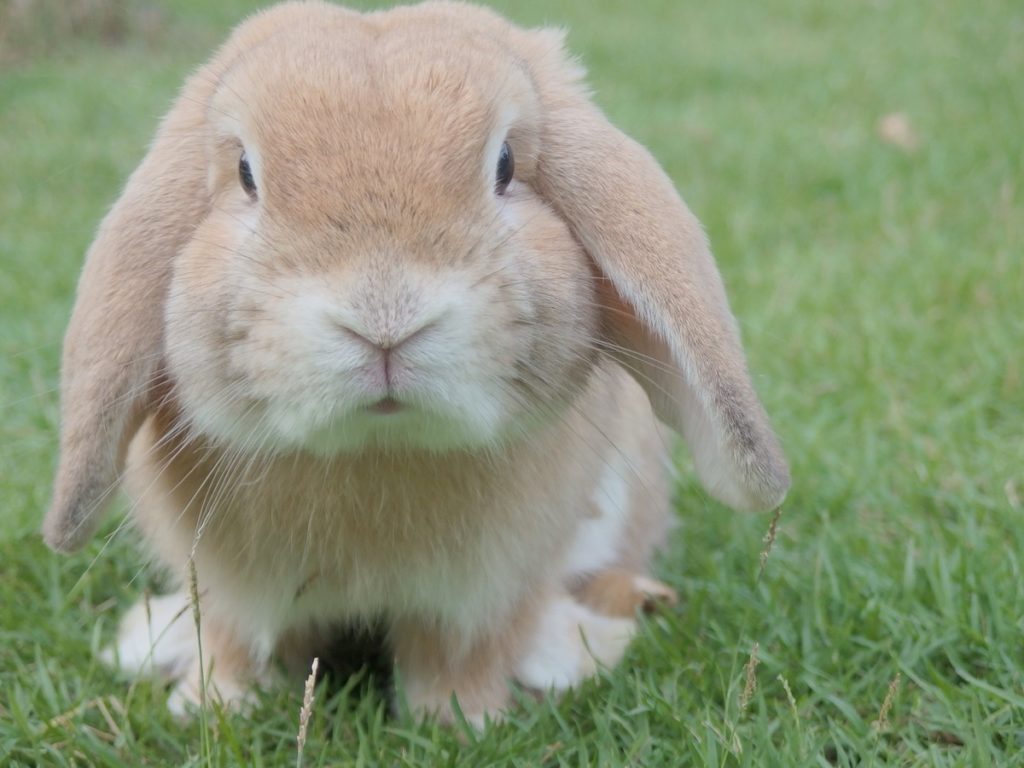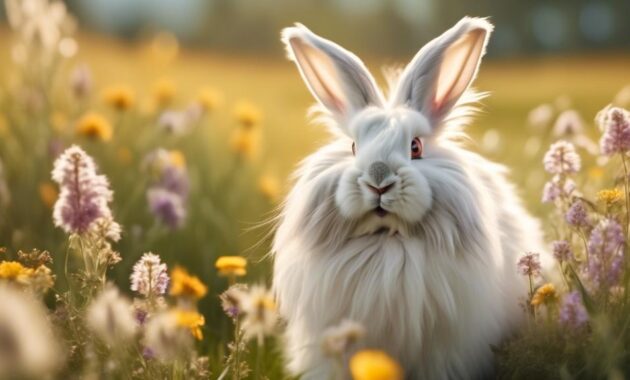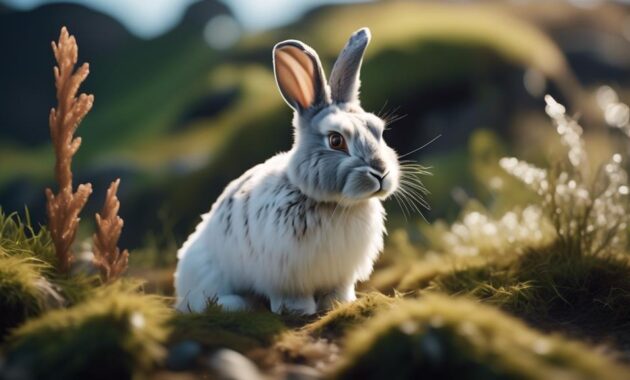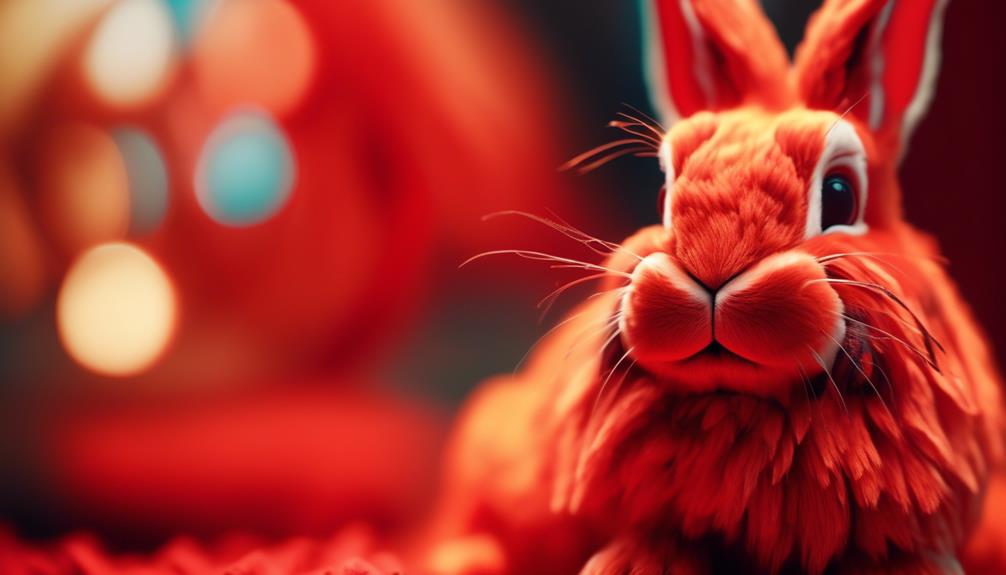
Are you aware that the fiery red Thrianta rabbit is not only a stunning sight to behold, but also a breed with a remarkable history?
This captivating companion has managed to overcome near extinction during World War II and has made its way to America, where it was officially recognized by the American Rabbit Breeders Association.
But don’t let its fiery red coat and charming appearance fool you – there is so much more to discover about this curious and affectionate companion.
From its unique characteristics to its care requirements and temperament, the Thrianta rabbit will captivate your heart and leave you wanting to learn more.
Key Takeaways
- Thrianta rabbits are medium-sized, weighing 4-6 lbs, with a compact body shape and a signature fiery red coat.
- They have a docile, affectionate, curious, and gentle temperament, making them suitable for singles, seniors, families with children, and first-time owners.
- Thrianta rabbits require a balanced diet consisting of at least 70% hay, along with pellets, leafy greens, fruits, and vegetables. Care should be taken with harmful leafy greens and vegetables.
- Regular check-ups for ear mites, overgrown teeth, and flystrike are important, and spaying/neutering is recommended for females at 6 months and males at 3.5 months for their health and well-being.
Thrianta Rabbit Characteristics
The Thrianta Rabbit is a compact and affectionate companion, weighing between 4-6 lbs and with a lifespan of 7-10 years. It’s a perfect choice for singles, seniors, families with children, and first-time owners. This rabbit has a docile and gentle temperament, making it an ideal pet for anyone looking for a loving and curious companion.
With its rounded and smooth body shape, the Thrianta Rabbit has a distinctive appearance. It has a short, full head set on a short neck, and its erect, thickly-furred ears add to its charm. This rabbit is known for its signature fiery red coat, which sets it apart from other breeds.
Taking care of a Thrianta Rabbit involves providing a diet rich in hay, pellets, leafy greens, fruits, and vegetables. Regular exercise and socialization are also essential for its well-being.
Thrianta Rabbit Breed History
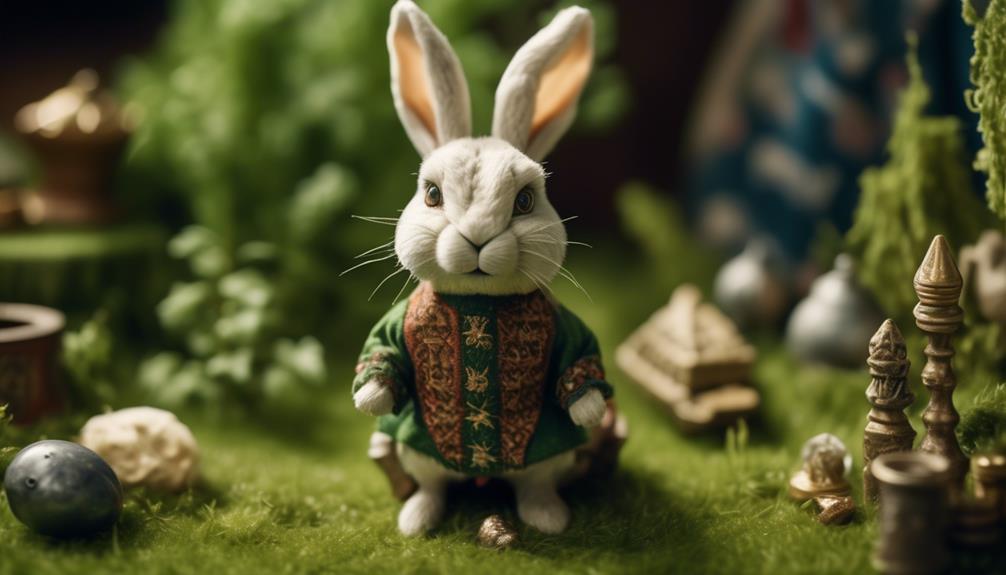
Developed in Holland by breeder H. Andreae, the Thrianta Rabbit is a breed named after the place where it was originated. Recognized by the Dutch in May 1940, the Thrianta Rabbit almost faced extinction during World War II. However, it survived through breeding with German rabbits.
In 1996, the breed was brought to America and was officially recognized by the American Rabbit Breeders Association (ARBA) in 2005. The Thrianta Rabbit is known for its striking fiery red coat and compact body shape. It’s a medium-sized rabbit, weighing between 4-6 pounds.
Despite its small size, the Thrianta Rabbit has a courageous and curious nature, making it an ideal companion for individuals and families alike.
Thrianta Rabbit Description
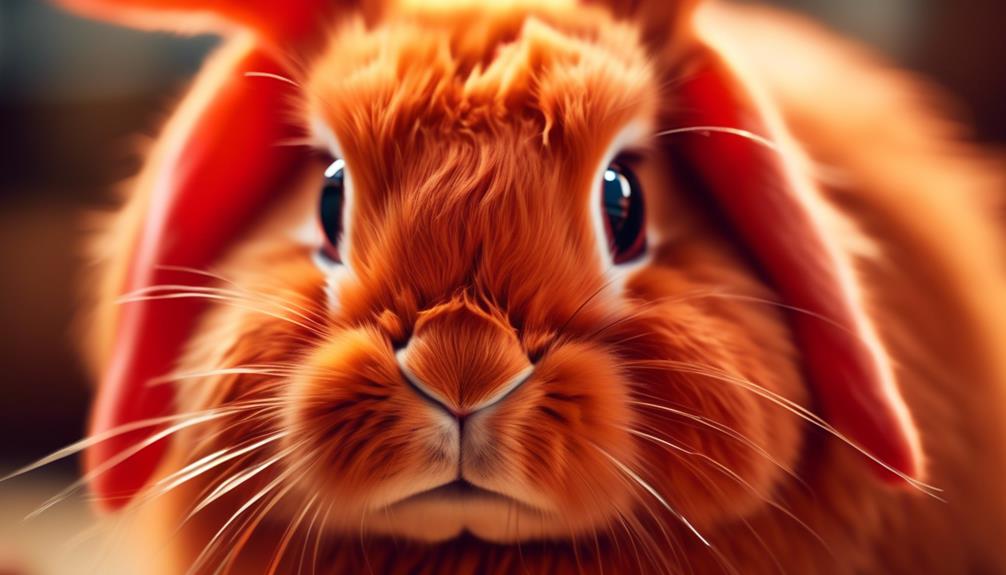
After surviving through breeding with German rabbits during World War II, the Thrianta Rabbit emerged as a distinctive breed known for its striking fiery red coat and compact body shape.
This medium-sized rabbit typically weighs between 4 to 6 pounds. It has a compact body shape with a rounded, smooth, and plump appearance. The Thrianta Rabbit has a short, full head set on a short neck, along with erect, stocky, thickly-furred ears.
Its signature feature is its fiery red coat, which is the only body marking it possesses. With its unique appearance and vibrant color, the Thrianta Rabbit is truly a sight to behold.
Thrianta Rabbit Care Requirements
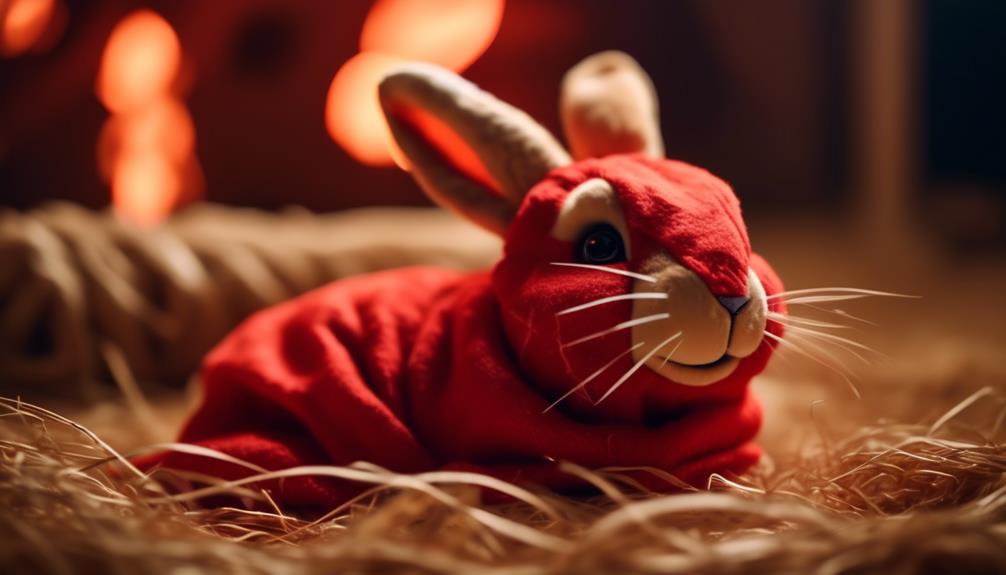
To properly care for a Thrianta Rabbit, it’s important to meet their specific needs and provide a nurturing environment. Here are three essential care requirements for a Thrianta Rabbit:
- Diet: Ensure that at least 70% of their diet consists of high-quality hay, such as Timothy or meadow grass. Supplement this with pellets specifically formulated for rabbits, and offer a variety of fresh leafy greens, fruits, and vegetables. However, be cautious of harmful options like iceberg lettuce and high-sugar fruits.
- Exercise and Sunshine: Thrianta rabbits are energetic creatures that need plenty of exercise. Provide them with ample space to hop around and explore, both indoors and outdoors. Outdoor enclosures should be raised off the ground and made of wood or wire, while indoor enclosures should be made of wire and spot-cleaned daily.
- Health Care: Regularly check their ears for mites and keep an eye out for overgrown teeth and flystrike. Spaying or neutering is recommended to prevent certain health issues and promote a friendly temperament. Finally, ensure proper socialization to maintain a well-rounded and happy Thrianta Rabbit.
Thrianta Rabbit Health
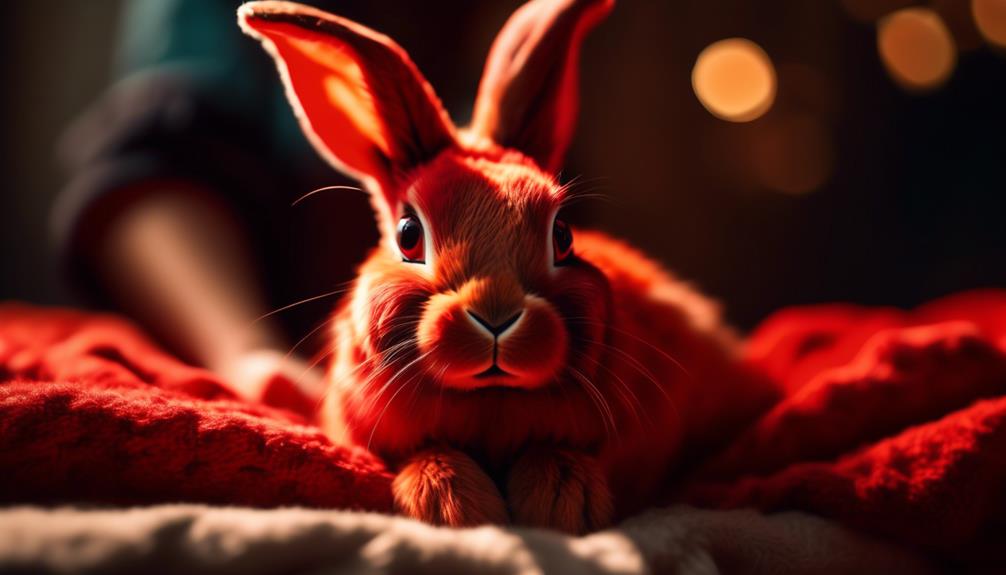
Maintaining the health of your Thrianta Rabbit is essential to ensure a happy and thriving companion.
To keep your rabbit healthy, it’s important to provide a balanced diet consisting of at least 70% hay, along with pellets, leafy greens, fruits, and vegetables. However, be cautious of harmful leafy greens and vegetables.
Regular exercise and exposure to sunshine, both indoors and outdoors, are also crucial for their well-being. For outdoor enclosures, make sure they’re raised off the ground and made of wood or wire. Indoor enclosures should be made of wire and spot-cleaned daily, with complete bedding changes weekly.
Additionally, check your rabbit’s ears regularly for mites, and be mindful of potential dental issues and flystrike. Spaying/neutering is recommended for females at 6 months and males at 3.5 months to prevent certain health problems.
Thrianta Rabbit Temperament
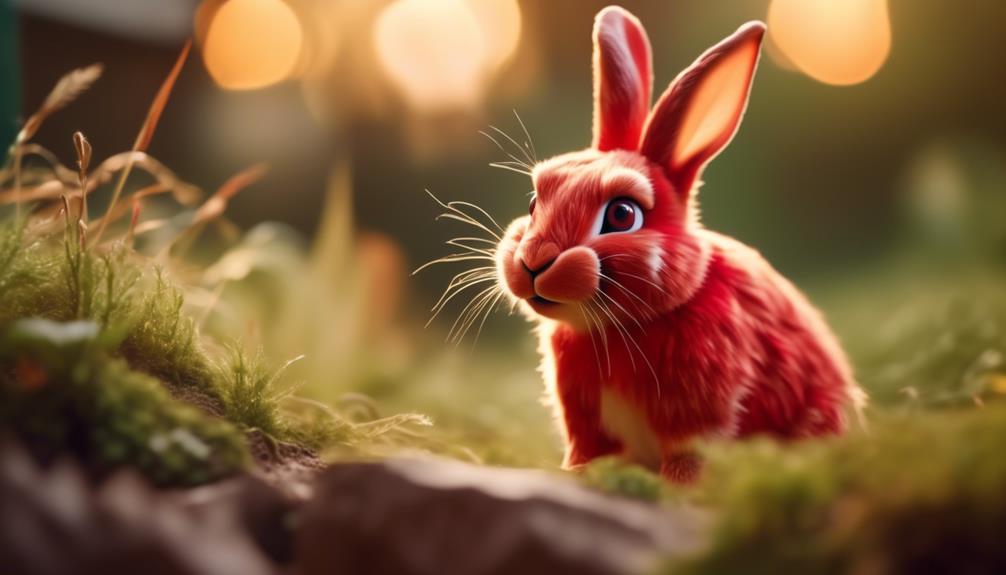
To truly understand the Thrianta Rabbit, it’s important to explore its endearing temperament and how it contributes to a rewarding companionship. Here are three key aspects of the Thrianta Rabbit’s temperament:
- Docile: Thrianta Rabbits are known for their calm and gentle nature. They’ve a relaxed demeanor and are unlikely to display aggressive behavior, making them suitable for families with children or first-time rabbit owners.
- Affectionate: These rabbits thrive on human interaction and enjoy being cuddled and petted. Their loving nature makes them excellent companions, as they form strong bonds with their owners and seek out their company.
- Curious: Thrianta Rabbits have a natural curiosity that drives them to explore their surroundings. They love to investigate new objects and environments, making playtime with toys an essential part of their daily routine.
With their docile, affectionate, and curious temperament, Thrianta Rabbits make delightful companions for anyone seeking a loving and inquisitive pet.
Thrianta Rabbit Spaying/Neutering Recommendations
Spaying/neutering is strongly recommended for Thrianta Rabbits to ensure their overall health and well-being. For females, it’s recommended to spay them at around 6 months of age, while males should be neutered at approximately 3.5 months.
Spaying or neutering your Thrianta Rabbit offers several benefits. It helps to prevent unwanted pregnancies and reduces the risk of certain reproductive diseases, such as uterine cancer in females. Neutering males can also help to reduce aggressive behavior and decrease the likelihood of territorial marking. Additionally, spaying or neutering can contribute to a longer lifespan and a happier, more relaxed rabbit.
It’s important to consult with a veterinarian experienced in rabbit care to ensure a successful procedure.
Frequently Asked Questions
How Do I Introduce a Thrianta Rabbit to Other Pets in My Household?
To introduce your Thrianta rabbit to other pets, start by keeping them in separate spaces and gradually allow supervised interactions. Monitor their behavior closely and ensure a safe and calm environment for everyone involved.
Can Thrianta Rabbits Be Trained to Use a Litter Box?
Yes, Thrianta rabbits can be trained to use a litter box. Start by placing the litter box in their enclosure and gradually move any soiled bedding into it. Reward them with treats and praise when they use it correctly.
Are Thrianta Rabbits Prone to Any Specific Health Issues?
Thrianta rabbits aren’t prone to specific health issues, but it’s important to regularly check their ears for mites and prevent overgrown teeth and flystrike. Spaying/neutering is recommended for females at 6 months and males at 3.5 months.
What Type of Housing Is Best for a Thrianta Rabbit?
For a Thrianta rabbit, the best housing is an outdoor enclosure made of wood or wire, raised off the ground. Indoors, a wire enclosure that is spot-cleaned daily and has weekly bedding changes is ideal.
How Often Should I Groom My Thrianta Rabbit and What Tools Do I Need?
You should groom your Thrianta rabbit regularly to keep its coat healthy and clean. Use a soft brush or grooming mitt to remove loose fur and prevent matting. Aim for at least once a week.
Are Thrianta Rabbits Affectionate Like Lilac Rabbits?
Yes, Thrianta rabbits are affectionate like Lilac rabbits and can make the perfect companion for anyone looking for a loving and friendly pet. Their sweet and gentle demeanor makes them great for cuddling and bonding with their owners. Both breeds are known for their affectionate nature and make wonderful companions.
Conclusion
In conclusion, the fiery red Thrianta rabbit is a unique and captivating companion. Its captivating history, docile temperament, and affectionate nature make it a perfect addition to any home.
With its medium size, compact body shape, and fiery red coat, this rabbit is a true beauty. However, it’s important to remember that the Thrianta rabbit requires proper care and attention, including a balanced diet, regular exercise, and socialization.
By providing the right care, this curious and affectionate companion will bring joy and happiness to your life.

